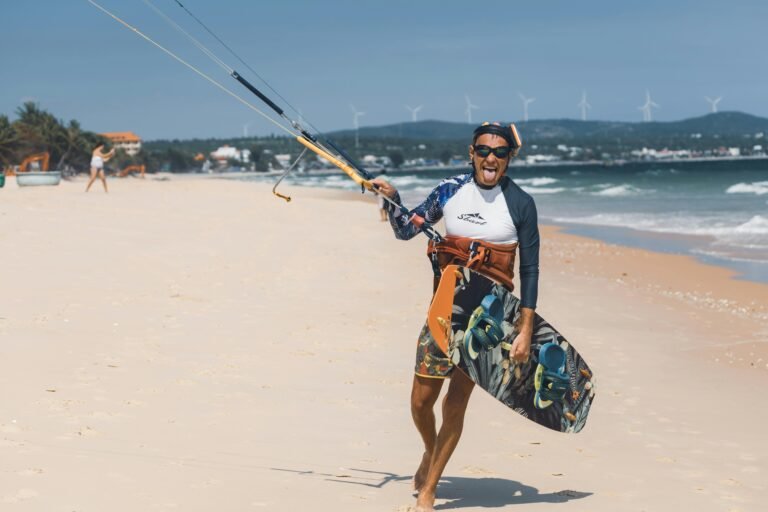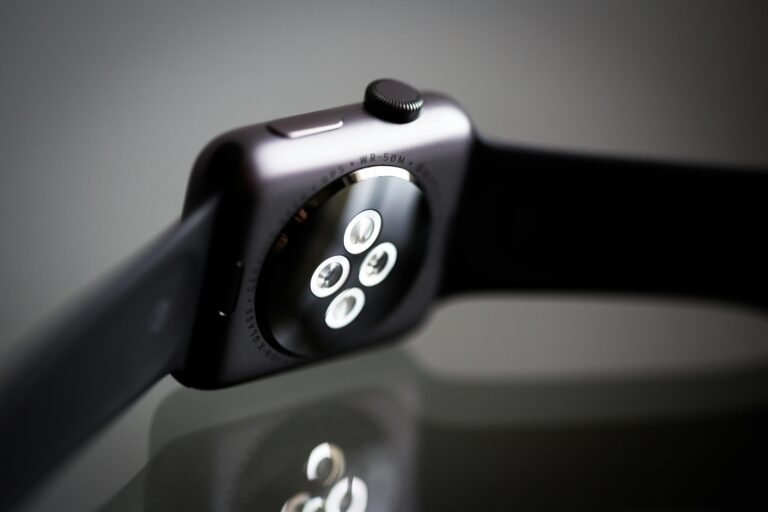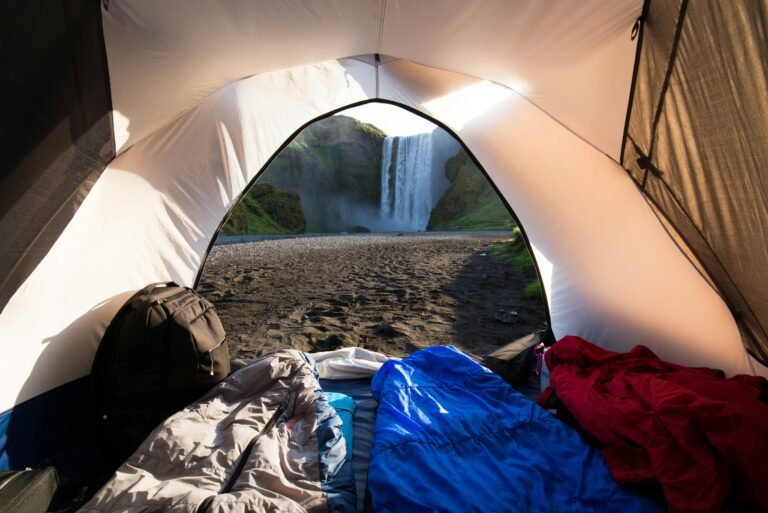Kitesurfing Helmets: Best Options for Every Skill Level and Budget

Kitesurfing isn’t just a sport—it’s an adventure that tests your skills, balance, and connection with the elements. But like any extreme sport, it comes with risks. A good kitesurfing helmet is your first line of defense against unexpected head injuries.
High-speed crashes, a collision with your board, or even an accident involving another rider can happen when you least expect it.
Wearing a helmet isn’t just about safety. It also makes your sessions more enjoyable. The right helmet can protect you from the sun, wind, and spray, while keeping you comfortable and focused on what really matters—riding the water.
Not all helmets are built the same, though. Whether you’re just starting out, on a tight budget, or looking for something high-end, there’s a helmet that fits your needs.
In this guide, we’ll walk through the top kitesurfing helmets, with options for beginners, pros, and everything in between. Let’s get started.
Quick Overview
- Best Overall: Mystic MK8 X Helmet
- Best Budget-Friendly: Triple Eight Sweatsaver Halo Water Helmet
- Best Premium: Gath Gedi Convertible Helmet
- Best for Beginners: Mystic MK8 Helmet
- Best for Advanced Riders: Gath Surf Convertible Helmet.
- Best Lightweight: Gath Neo Sport Surf Helmet
- Best for Ventilation: Bern Macon H2O Helmet
Why Helmets Are Essential in Kitesurfing
Kitesurfing is about harnessing the wind and carving through the water at thrilling speeds. But with that thrill comes risk.
Crashing into the water, hitting your board, or getting struck by the kite bar can happen in an instant.
That’s where helmets come in—they’re your first line of defense, making the sport not just safer, but more enjoyable.
Protection Against Head Injuries
The biggest reason to wear a helmet is simple: it protects your head.
Hitting water at high speed can feel like hitting concrete. Add in obstacles like rocks, floating debris, or your board, and the risk grows.
A helmet absorbs and spreads out the force of these impacts, making injuries less severe—or avoiding them altogether.
Enhancing Performance and Confidence
Safety isn’t just physical; it’s mental, too. Knowing your head is protected lets you focus completely on the ride.
You’ll feel more confident trying new tricks, pushing your limits, and staying in the moment. That confidence can take your kitesurfing to the next level.
Better Visibility and Element Protection
Many helmets come with added features to help you see clearly and stay comfortable. A visor can shield your eyes from harsh sunlight or sprays of water.
Some models include windproof ear covers that reduce noise while keeping you aware of your surroundings. These small details make a big difference when you’re out on the water.
Key Features to Look for in a Kitesurfing Helmet
Finding the right helmet for kitesurfing is all about balancing safety, comfort, and practicality. Unlike general helmets, those made for water sports are designed to handle unique conditions like constant moisture, high-speed impacts, and long hours under the sun.
Here’s what to look for when choosing your helmet:
Lightweight Design
A good kitesurfing helmet should feel light on your head. A heavy helmet can strain your neck, especially during long sessions or while performing tricks.
Lightweight materials make it easier to move freely without sacrificing protection.
Durable and Impact-Resistant Materials
Look for helmets made with tough materials like ABS plastic or carbon fiber.
These materials absorb and distribute impact force, reducing the risk of serious injuries from crashes, board collisions, or rogue waves.
Waterproof and Rust-Resistant Components
Water exposure is constant in kitesurfing. That’s why a helmet needs waterproof padding and rust-proof hardware. These features prevent wear and tear, keeping your helmet reliable over time.
Effective Ventilation
Ventilation is key for staying comfortable. Many kitesurfing helmets have built-in vents that let air flow through, keeping your head cool.
These vents also allow water to drain quickly, so the helmet doesn’t feel heavy after a wipeout.
Adjustable Fit
A helmet that doesn’t fit properly won’t stay on during a crash. Most kitesurfing helmets offer adjustable straps, dials, or padding systems to help you get a snug, secure fit.
This ensures your helmet stays put, even in rough conditions.
Safety Certifications
To know you’re getting reliable protection, look for helmets that meet safety standards like
CE EN 1385.
This certification guarantees the helmet has been tested for impact resistance and durability specifically for water sports.
Additional Features
- Visors: Useful for blocking sunlight or water spray, improving your visibility on the water.
- Ear Covers: Protect your ears from wind and water impacts while still letting you hear what’s around you.
- Built-in Communication Systems: Some helmets include mounts or integrated systems for communication devices, which can be helpful for group sessions or lessons.
By paying attention to these features, you can find a helmet that fits your needs, protects you on the water, and makes your kitesurfing sessions more enjoyable.
A well-chosen helmet isn’t just gear—it’s a smart investment in your safety and comfort.
The Best Kitesurfing Helmets by Category
Best Overall Kitesurfing Helmet
Best Overall
Mystic MK8 X Helmet

The Mystic MK8 X Helmet earns the top spot for its thoughtful design, blending safety with exceptional comfort.
Trusted by water sports enthusiasts, this helmet is built to handle the demands of kitesurfing while keeping you comfortable during long sessions.
Runner-Up
Pro-Tec Ace Wake Helmet

For those looking for a simpler option, the
Pro-Tec Ace Wake Helmet is a fantastic alternative.
It’s designed for high performance while keeping things minimalist and practical.
While it doesn’t have the advanced adjustability of the Mystic MK8 X, the Pro-Tec Ace Wake Helmet still delivers excellent protection and comfort, making it a reliable choice for kitesurfers who prefer a straightforward, no-frills design.
Best Budget-Friendly Kitesurfing Helmet
Not everyone wants to spend a fortune on a kitesurfing helmet, especially if you’re new to the sport or just need a backup. The good news?
There are plenty of affordable options that still prioritize safety and functionality. A budget-friendly helmet should cover the basics: solid impact protection, comfort, and a reliable fit.
Best Budget
Triple Eight Sweatsaver Halo Water Helmet

The Triple Eight Sweatsaver Halo Water Helmet is a solid pick if you’re looking for reliable protection without spending a fortune.
It’s simple, dependable, and gets the job done, making it perfect for beginners or anyone trying out water sports without breaking the bank.
Best Premium Kitesurfing Helmet
For riders pushing the boundaries in challenging conditions, a premium kitesurfing helmet delivers top-tier performance, durability, and comfort.
These helmets are built with advanced materials and features, making them ideal for experienced kitesurfers who prioritize safety and performance.
Best Premium
Gath Gedi Convertible Helmet

The Gath Gedi Convertible Helmet represents the pinnacle of premium design.
Loved by professional and advanced kitesurfers worldwide, it blends cutting-edge technology with a sleek, lightweight profile.
Best Helmet for Beginners
If you’re new to kitesurfing, your helmet should prioritize safety, comfort, and ease of use.
A beginner-friendly helmet needs to be lightweight, reliable, and simple to adjust, giving you confidence while you focus on learning the basics.
Best for Beginners
Mystic MK8 Helmet

The Mystic MK8 Helmet is a standout choice for beginners.
It combines essential safety features with
user-friendly design, making it the perfect companion for those just starting their kitesurfing journey.
Best Helmet for Advanced Kitesurfers
Experienced kitesurfers face tougher conditions and execute high-intensity tricks that demand a helmet with advanced features.
These helmets should provide maximum protection, aerodynamic performance, and adaptability, all while being lightweight and comfortable for long sessions.
Best for Advanced Riders
Gath Surf Convertible Helmet

The Gath Surf Convertible Helmet is the go-to choice for advanced riders.
Its sleek, aerodynamic profile and
high-performance materials are perfect for handling challenging conditions and pushing boundaries.
Best Lightweight Kitesurfing Helmet
When you’re spending hours on the water, every ounce counts. Lightweight helmets are a game-changer, reducing fatigue while still providing the protection you need.
These helmets focus on using advanced materials and designs to offer durability and safety without unnecessary bulk.
Best Lightweight
Gath Neo Sport Helmet

The Gath Neo Sport Helmet stands out for its ultra-lightweight design and dependable protection, making it ideal for those seeking minimal bulk without sacrificing safety.
Best Helmet for Ventilation
When kitesurfing in warm climates or during long sessions, proper ventilation is key to staying comfortable.
A helmet with excellent airflow helps prevent overheating, reduces sweat buildup, and keeps you focused on the ride.
Best Ventilation
Bern Macon H2O Helmet

The Bern Macon H2O Helmet is the go-to choice for kitesurfers who prioritize ventilation.
Its thoughtful design promotes consistent airflow while maintaining robust protection.
Maintenance Tips for Kitesurfing Helmets
Taking care of your kitesurfing helmet is essential for keeping it safe and functional over time.
Helmets face constant exposure to saltwater, sand, and UV rays, which can cause damage if not properly maintained.
Follow these simple tips to extend the life of your helmet and ensure it continues to protect you effectively.
1. Rinse After Every Use
- Why: Saltwater and sand can cause corrosion and wear, especially on metal components like buckles.
- How: Rinse your helmet thoroughly with fresh water after every session. Focus on ventilation holes and drainage systems to remove any trapped debris.
2. Clean the Interior Liner
- Why: Sweat and moisture can lead to odors and bacteria buildup.
- How: If the liner is detachable, hand-wash it with mild soap and water. Let it air-dry completely before putting it back in the helmet.
3. Store in a Cool, Dry Place
- Why: Heat and sunlight can weaken materials and fade colors over time.
- How: Store your helmet in a shaded, well-ventilated spot. Use a helmet bag to protect it from UV rays and scratches.
4. Inspect for Damage Regularly
- Why: Cracks, dents, or worn straps can compromise your helmet’s safety.
- How: Check the shell, straps, and padding before each use. If you notice cracks, loose parts, or other damage, replace the helmet immediately.
5. Avoid Harsh Chemicals
- Why: Strong cleaners or solvents can degrade the helmet’s materials and reduce its effectiveness.
- How: Stick to cleaning with mild soap and water. Avoid bleach, alcohol, or abrasive cleaners that can harm the protective surface.
6. Replace When Necessary
- Why: Helmets lose their effectiveness over time or after a major impact.
- How: Replace your helmet every 3–5 years, or sooner if it’s been in a significant crash. Always follow the manufacturer’s guidelines for replacement.
7. Keep Spare Parts on Hand
- Why: Parts like straps or padding may wear out faster than the shell.
- How: Check if your helmet’s manufacturer offers replacement parts. Having spares ensures you can make quick repairs without buying a whole new helmet.
By following these maintenance tips, you’ll keep your helmet in excellent condition. A well-maintained helmet not only lasts longer but also ensures you stay safe and comfortable on every ride.
Frequently Asked Questions
About Kitesurfing Helmets
When choosing a kitesurfing helmet, it’s normal to have questions about safety, usability, and functionality. Below are answers to some of the most common concerns to help you make the right choice.
Conclusion
Kitesurfing is a thrilling sport that blends skill, focus, and a deep connection with the elements. But no matter your level of expertise, safety must always come first.
A high-quality helmet is a non-negotiable piece of gear that protects you while enhancing your confidence and performance on the water.
When selecting a helmet, consider your experience, the conditions you’ll be riding in, and your budget. Always prioritize certified helmets and proper maintenance to keep your gear dependable and safe.
Investing in the right helmet doesn’t just protect you—it empowers you. Knowing you’re secure on the water lets you focus on what truly matters: the freedom and excitement of kitesurfing.
Stay safe and enjoy the ride!
Affiliate Disclosure
This article may contains affiliate links. If you make a purchase, I may earn a small commission at no extra cost to you. Thank you for your support!






